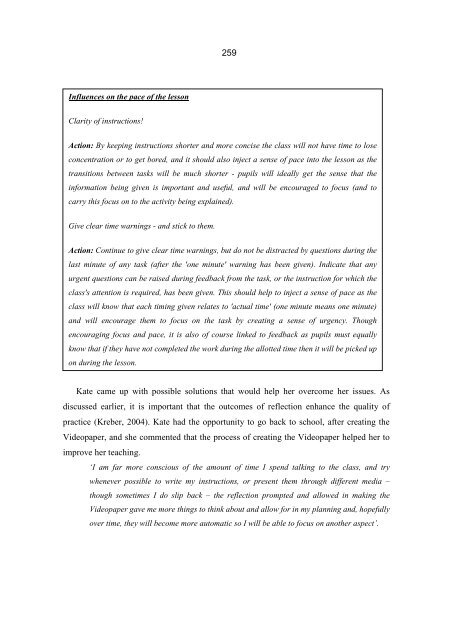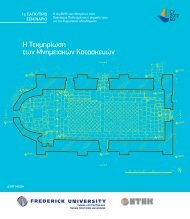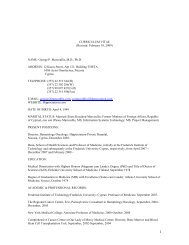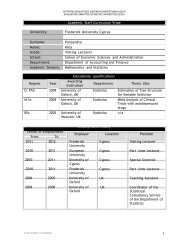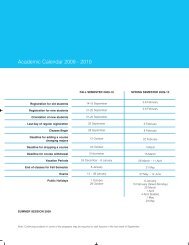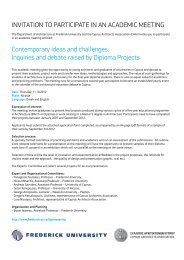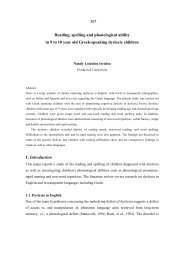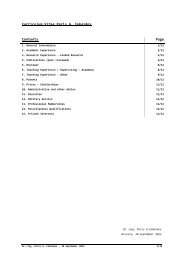Videopaper and teacher education Student teachers create ...
Videopaper and teacher education Student teachers create ...
Videopaper and teacher education Student teachers create ...
Create successful ePaper yourself
Turn your PDF publications into a flip-book with our unique Google optimized e-Paper software.
Influences on the pace of the lesson<br />
Clarity of instructions!<br />
259<br />
Action: By keeping instructions shorter <strong>and</strong> more concise the class will not have time to lose<br />
concentration or to get bored, <strong>and</strong> it should also inject a sense of pace into the lesson as the<br />
transitions between tasks will be much shorter - pupils will ideally get the sense that the<br />
information being given is important <strong>and</strong> useful, <strong>and</strong> will be encouraged to focus (<strong>and</strong> to<br />
carry this focus on to the activity being explained).<br />
Give clear time warnings - <strong>and</strong> stick to them.<br />
Action: Continue to give clear time warnings, but do not be distracted by questions during the<br />
last minute of any task (after the 'one minute' warning has been given). Indicate that any<br />
urgent questions can be raised during feedback from the task, or the instruction for which the<br />
class's attention is required, has been given. This should help to inject a sense of pace as the<br />
class will know that each timing given relates to 'actual time' (one minute means one minute)<br />
<strong>and</strong> will encourage them to focus on the task by creating a sense of urgency. Though<br />
encouraging focus <strong>and</strong> pace, it is also of course linked to feedback as pupils must equally<br />
know that if they have not completed the work during the allotted time then it will be picked up<br />
on during the lesson.<br />
Kate came up with possible solutions that would help her overcome her issues. As<br />
discussed earlier, it is important that the outcomes of reflection enhance the quality of<br />
practice (Kreber, 2004). Kate had the opportunity to go back to school, after creating the<br />
<strong>Videopaper</strong>, <strong>and</strong> she commented that the process of creating the <strong>Videopaper</strong> helped her to<br />
improve her teaching.<br />
‘I am far more conscious of the amount of time I spend talking to the class, <strong>and</strong> try<br />
whenever possible to write my instructions, or present them through different media –<br />
though sometimes I do slip back – the reflection prompted <strong>and</strong> allowed in making the<br />
<strong>Videopaper</strong> gave me more things to think about <strong>and</strong> allow for in my planning <strong>and</strong>, hopefully<br />
over time, they will become more automatic so I will be able to focus on another aspect’.


